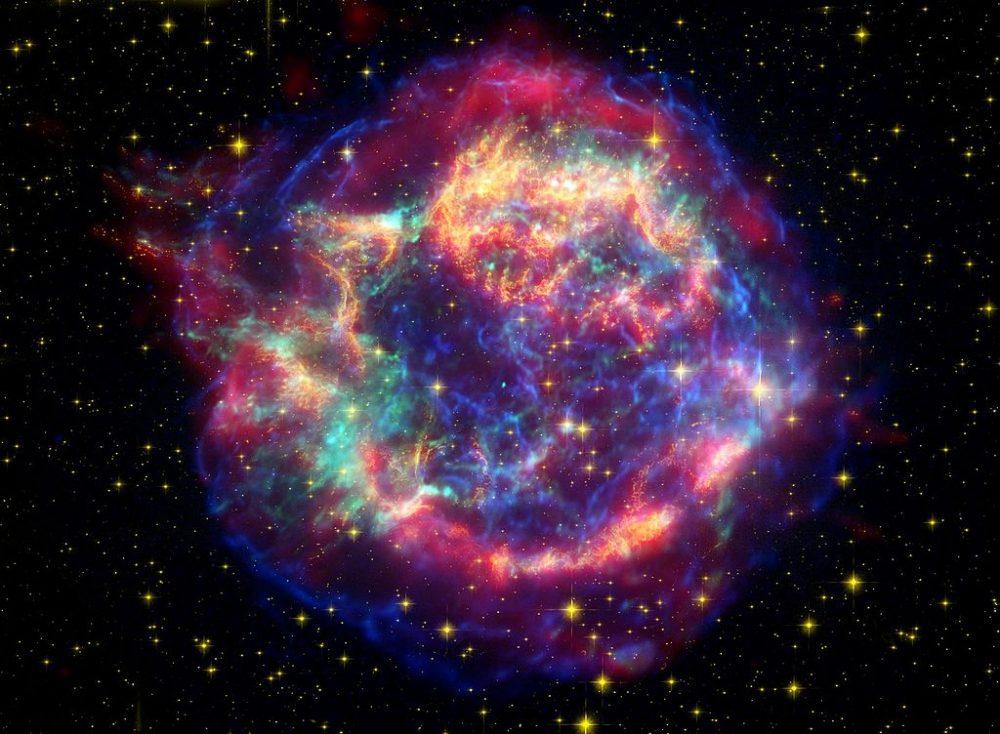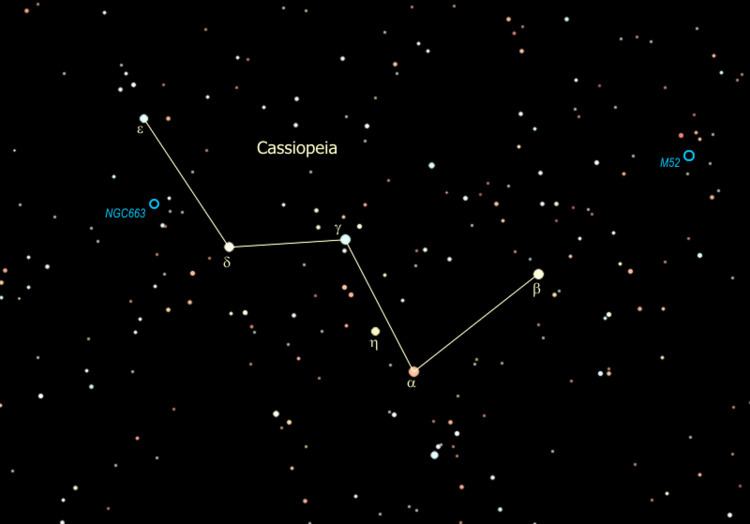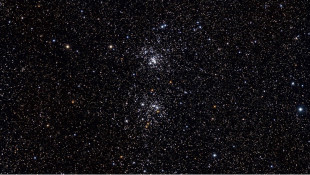6 Cassiopeiae
| Deepsky Atlas | Links | Constellations: Cassiopeia -- Mother of Andromeda |
Myth

Jan 04, 2021 The secondary star, Eta Cassiopeiae B, is a K-type main-sequence star of spectral type K7V, having an apparent magnitude of 7.51. Eta Cassiopeiae B is also cooler, having an effective temperature of around 4,036 K, it is also cooler than our Sun. Eta Cassiopeiae B generates energy slowly since it is small, radiating only 6% of our Sun’s. 6 Cassiopeiae is a very luminous Supergiant Star type star. 6 Cassiopeiae is a A3IA COMP supergiant star based on the spectral type that was recorded in the Hipparcos star catalogue. 6 Cassiopeiae is not part of the Cassiopeia constellation outline but is within the borders of the constellation.
Cassiopeia belongs to a grouping that includes Cepheus, Andromeda, Perseus, and Cetus. For the story behind this grouping, click here.Maps
 Each map can be clicked on to produce a 909x1199 version of it. They sport red labels, which look good on screen, but which disappear when used with red flashlights. Each map, therefore has a second link to a map better suited for printing in a graphics program, and using in the field. While they are quite large, they are all about 50k, and so are easy to view at today's modem speeds. The first map is a wide area view of the constellation, suitable for naked eye browsing. The next views are binocular width, showing stars to mag. 10, and labeling deepsky objects to magnitude 12.
Each map can be clicked on to produce a 909x1199 version of it. They sport red labels, which look good on screen, but which disappear when used with red flashlights. Each map, therefore has a second link to a map better suited for printing in a graphics program, and using in the field. While they are quite large, they are all about 50k, and so are easy to view at today's modem speeds. The first map is a wide area view of the constellation, suitable for naked eye browsing. The next views are binocular width, showing stars to mag. 10, and labeling deepsky objects to magnitude 12.Interactive, wide area map of Cassiopeia
Click the map for a 909x1199 version of the above. Click here for a map better suited for use in the field.
Eastern Section
Click here for a map better suited for use in the field.
Western Section
Click here for a map better suited for use in the field.
Images
89k JPEG Stock 12 is a loose open cluster located in the far SW of the constellation. Its size is listed as 20', and it contains stars mag 8 and fainter. You find it on the bottom end (south) of the image, 2/3 to the left (east). Frankly, it's boring. The good stuff is a splash of muticolored stars 30' to the NW. From the Digital Sky Survey.
|
|
Image on the left from the Digital Sky Survey. Color image on the right by Beat Kohler and posted on Astro Info, a service of the Swiss Astronomical Society. A multilingual web site, most of the information is available only in German.
|
32k JPEG M52 (NGC7654) is a large (13'), condensed, rich open cluster on the western border of Cassiopeia. Total brightness is mag. 6.9. Stars range from mags. 9-13. Messier thought he saw nebulosity, but there is none. Image taken with a HISYS 22 on a 4' Meade at f6.3.
|
|
24k JPEG NGC147 (Caldwell 17) is a very faint (mag. 9.3), very large (13'x8'), irregular shaped dwarf elliptical galaxy with a bright core accented by foreground stars at the core. It is located 5.4° south of Zeta Cassiopeiae. From the Digital Sky Survey.
|
11k JPEG NGC185 (Best 12, Caldwell 18) is a pretty bright (mag. 9.2), very large (14'x12'), irregular shaped dwarf elliptical galaxy with a less pronounced core than its companion NGC147. Dreyer says it is 'resolvable,' meaning there are dark markings in the middle. It is located 5.4° south of zeta Cassiopeiae. From the Digital Sky Survey.
|
64k JPEG NGC281 (Best 13) is an open cluster with nebulosity located 1.7° east of Shedar (Alpha Cassiopeiae). Dreyer's description reads as follows: Faint (mag. 7), very large (35'), diffused, with a small triple star on the northwest edge. The nebulosity, sometimes called the Pacman Nebula, responds to filters, and even better to photography. It lies in a rich field. Image by Marco Lorenzi taken on film through an 8', f4, coma corrected Newtonian.
|
47k JPEG Object 4 (Be4) in the Berkeley University Catalog of open clusters. This is a mag 10.6 grouping with members at mags 12.5 and fainter. Size is about 5'. A notable feature is the tight, arrow shaped cluster pointing south, and an arc of stars to the ESE. Located 2° NE of Kappa Cassiopeiae. From the Digital Sky Survey.
|
71k JPEG IC59 and IC63 are parts of a reflection nebula located .5° north and north-east of Navi (Gamma Cassiopeiae. Both are fairly faint and extremely large. Dreyer's little 'remarkable' code sits after the size description, rather unusual. The photograph from the Digital Sky Survey suggests you may have better luck with IC63. The plates are somewhat blue sensitive, though. Also, while you fit everything in a 1° field, you will do better keeping Navi out of the field.
|
6k GIF NGC457 (Best 14, Caldwell 13) is a bright (mag. 6.4), large (13'), pretty rich cluster with stars from mag. 8 and fainter. Called the Owl Cluster, it is located 2.1° SSW of Ruchbah (Delta Cassiopeiae). The image is a drawing by Peter Schlatter of observations through a 10' Schmidt-Cassegrain telescope at 62x on August 31, 1995.
|
34k JPEG NGC559 (Caldwell 8) is an open cluster located 2.8° west of Epsilon Cassiopeiae. Dreyer calls it bright (mag. 9.5), pretty large (4'), and pretty rich. It contains about 60 stars, mag. 10.6 and fainter. From the Digital Sky Survey.
|
32k JPEG M103 (NGC581) is a pretty large (6'), round, rich open cluster 1° NW of Delta Cassiopeiae. Total brightness is mag. 7.4. Stars range from mags. 10-11. Image taken with a HISYS 22 (two minute exposure) on a 4' Meade at f6.3.
|
65k JPEG NGC663 (Best 15, Caldwell 10) is another open cluster located 2.4° SSW of Epsilon Cassiopeiae. Dreyer calls it bright (mag. 7.1), large (16'), and extremely rich. It contains about 80 stars, mag. 8.4 and fainter. Several of the brighter stars make pretty pairs. From the Digital Sky Survey.
|
79k JPEG Collinder 463 is a pretty open cluster, nice in moderately sized scopes, gorgeous in 16' and larger. Located in the far north of the constellation, its overall magnitude is 5.7, with individual stars at 8.5 and fainter. About 40 stars in a 36' field. From the Digital Sky Survey.
|

23k JPEG NGC743 is another open cluster located 4.2° east of Ruchbah (Delta Cassiopeiae). It's not rich and has a double star involved. It contains about 12 stars, mag. 10 and fainter. Shaped like 'an arrowhead with a jewel inside it.' From the Digital Sky Survey.
|

23k JPEG Stock 2 is an open cluster located 2° NNW of the Double Cluster in Perseus. This is a large cluster, one degree across, containing 50 stars, mag. 8.2 and fainter. A very nice binocular object. From the Digital Sky Survey.
|
If you have any questions about the Hawaiian Astronomical Society
please (link requires javascript).
Return to top of page

Return to Deepsky Atlas home page
Return to HAS home page
When time is tight and the weather turns cold, I turn to a class of celestial objects that are very forgiving of observing conditions, light pollution, and telescope aperture: double and multiple stars. There are thousands of these objects visible during the year. Many are run-of-the-mill sights. But many more present a lovely appearance in a small telescope, revealing color, brightness contrast, and a jewel-like appearance that appeal to the artistically inclined while also packing plenty of physics and sheer challenge to the observer.
In this instalment of Cosmic Pursuits, I share with you three double and multiple stars in and around the throne of the legendary Ethiopian queen (along with a couple of extraordinary ‘bonus objects’). So grab a small telescope and head out to see them for yourself. The map above shows you where to find these relatively bright star systems and ‘bonus objects’….
– – – – – Now Available from Cosmic Pursuits – – – – –
Let’s begin with an easy one, the fine double star η (eta) Cassiopeiae. Also called Achird, it’s one of the most colorful and appealing doubles anywhere in the sky. The primary star shines at magnitude 3.5 with a yellow-gold color. The 7th-magnitude secondary is officially red-orange, but the visual contrast with the primary makes it appear reddish-purple, or perhaps garnet. Because of its coloring, some call this star the “Easter Egg” double.
The two stars of the η Cas system are just 19 light year away, right next door in cosmic terms, and they make a turn around each other every 480 years. Since their discovery by William Herschel in 1779, the stars have executed a considerable portion of their full revolution. In 1890, the stars were just 5″ (arcseconds) apart. They’re now spaced by about 13″ and getting wider, and they will continue to move apart until 2150 when they will be separated by 16″. Any telescope at 50x or more will split this pair.
Onward, now, to σ (sigma) Cassiopeiae. This pair is fainter and much tighter than eta. The components are magnitude 5.0 and 7.1 and their separation is 3″. You will need all the magnification you can muster to split this star. Steady sky is essential. If the air is moving and the stars are shimmering, it may not be possible to resolve this star at all. The colors of each component are blue to blue-white. Both stars are massive B-type dwarfs, and they lie at a considerable distance of 4,200 light years, more than 200 times farther than eta Cass.
While you’re in the area… just a degree to the north of σ Cass lies the very fine and large open star cluster NGC 7789. This cluster is old (more than one billion years), far (more than 8,000 light years), and faint (most stars are magnitude 11 or 12). Because it’s so old, many blue-white stars have turned into red giants, so the cluster is quite colorful. It was discovered by Caroline Herschel in 1783, and her nephew John Herschel called it a “most superb” cluster. You’ll need at least a 3-inch scope to resolve some of the stars in this cluster. More aperture is better.
Also while you’re in this region have a look at the star ρ (rho) Cassiopeiae. It’s not a double star, but it’s an astounding star nonetheless, so large and luminous that the word “supergiant” doesn’t fit. Astronomers classify rho Cass as a yellowhypergiant, one of only a few known in the galaxy. The star is unstable, bouncing back and forth between red and blue as it burns through its nuclear fuel at a profligate clip. Rho lies nearly 10,000 light years away. With an absolute magnitude of -9.5, some 500,000 times as bright as our Sun, it still appears visible without optical aid. The star is likely ejecting mass at a rapid rate. But it will retain more than enough to detonate as a supernova in the next several hundred thousand years.
Now to the other end of Cassiopeia to see the resplendent triple star ι (iota) Cassiopeiae. This star consists of a primary of magnitude 4.6 and two companions of magnitude 6.9 and 8.4. The two brighter components are just 2.5″ apart. That’s very tight, so the star is a challenge in a 3″ scope at 100x. If your sky is steady enough, power up to get the best view. The primary and its faintest companion are separated by about 7″, but the difference in brightness still makes for a challenge. The star is worth a look for the technical challenge of splitting it and for the beautiful color contrast of yellow (for the faintest star), pale lilac, and blue. The primary (the brightest component) is physically very similar to the star Cor Caroli in the constellation Canes Venatici. Both have strong magnetic fields, huge starspots, and high concentrations of some heavy elements in the atmosphere.
Share This: